Roof damage can be alarming, especially after significant storms. It’s vital to recognize signs like missing shingles or water stains, as these indicate a leaking roof that needs immediate attention. Acting quickly is essential to prevent further damage and protect against mold and structural issues. A reliable roofing company like Shield Roofing in San Antonio, TX, can help with insurance documentation after such disasters. Knowing the key steps for emergencies empowers you to act swiftly, ensuring efficient roof restoration.
Assessing Roof Damage After a Storm
After a storm, assessing potential roof damage is vital. Begin with a thorough inspection to identify visible issues and immediate risks. Prompt action is essential; ignoring signs of damage can lead to extensive water damage and costly repairs. Next, we’ll outline common indicators of roof damage.
Common Signs of Storm-Related Roof Damage
After a storm, homeowners must identify visible damage to prevent further issues. Check for missing shingles, which may signal wind or hail damage and potential water intrusion. Inspect areas around chimneys, vents, and edges for leaks. Water stains on ceilings or walls often indicate ongoing problems needing immediate attention.
When assessing your roof, look for mold or discoloration from moisture. If you suspect structural damage or electrical hazards, seek a professional inspection for safety and thorough evaluation. Document the damage with photos to assist in emergency repairs and insurance claims.
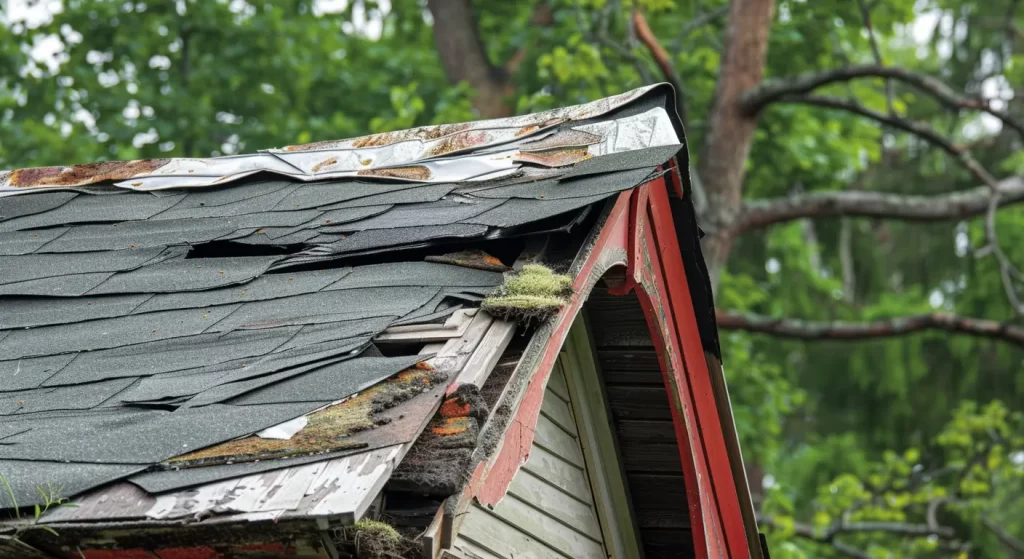
Safety Precautions Before Inspecting Your Roof
Prioritizing safety is essential before addressing roof damage. Clear the area around your home of debris and hazards, especially after strong winds that may have caused fallen branches or downed wires. Wear appropriate gear, like sturdy footwear and a hard hat, to protect against falls.
Before using a ladder, check its stability and inspect it for damage. Ideally, have someone hold the base while you ascend. If you notice visible damage from the ground, avoid risks by contacting emergency roof repair services for a professional inspection.
Immediate Steps to Take Following Roof Damage
Acting quickly after roof damage is essential to minimize further issues. First, secure the area to prevent hazards, especially if you see missing shingles or leaks. Use temporary measures like tarping or buckets to mitigate water intrusion and protect your interior.
After stabilizing the situation, document the damage with videos and photos for your insurance claim. Contact a professional for a thorough roofing inspection, as their expertise can identify structural damage or mold growth. This prompt action will expedite repairs and safeguard your home against future emergencies.
Temporary Measures to Prevent Further Water Intrusion
Taking immediate action after discovering roof damage can significantly reduce the risk of extensive water damage. First, use a tarp as a temporary fix over visible damage, especially leaks or missing shingles, to protect the interior until professional repairs can be arranged. Place buckets under leaks to collect dripping water and prevent interior damage and mold growth.
Be aware of electrical hazards from rising water levels. Inspect affected areas carefully before accessing the roof to ensure safety. Hiring a reputable contractor for a professional inspection will help assess the damage and prioritize emergency repairs, keeping your home safe and secure.
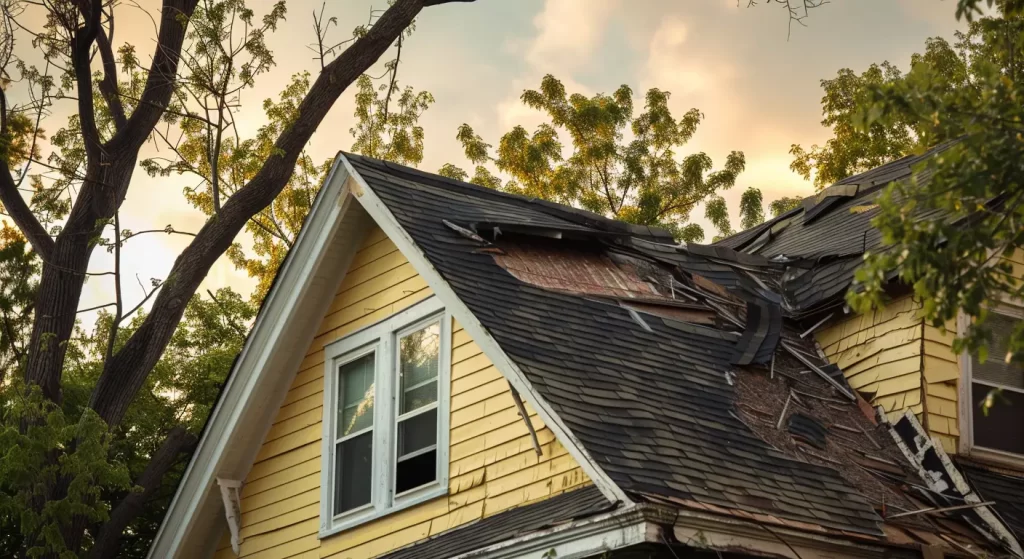
Documenting Damage for Insurance and Repairs
After a storm severely damages your roof, gathering comprehensive documentation is crucial. Start by taking clear photos or videos of visible damage, such as missing shingles or noticeable water stains. This evidence is vital for your insurance claim and helps significantly during roofing inspections. Document immediate actions taken to prevent further water intrusion. Include detailed information about the storm’s date and time, along with thorough notes on conversations with your roofing contractor or insurers. A thorough record will greatly expedite your claim process and maximize your coverage when disaster strikes unexpectedly.
When to Call Emergency Roofing Professionals
After a storm, seeking emergency roofing professionals is crucial if significant damage occurs. Recognizing visible signs like missing shingles or leaks requires immediate attention. A professional inspection accurately assesses the damage and gathers necessary documentation for insurance claims.
Engaging a reputable contractor during emergencies is essential to mitigate risks like electrical hazards or further water intrusion. Their expertise prevents extensive damage and structural issues from neglect. Timely intervention by emergency roof repair services can save homeowners from costly repairs or complete roof replacements.
How to Choose a Reliable Roofing Contractor
Choosing a reliable roofing contractor after storm damage is essential. Look for professionals with proper certifications and licensing, ensuring compliance with local safety regulations. A strong reputation in San Antonio, backed by customer reviews, indicates reliability and quality.
Prioritize contractors who offer thorough roof inspections and detailed repair estimates. Ensure they have experience with emergency repairs, particularly for missing shingles and water leaks. Finally, effective communication is key, as it ensures transparency and efficient handling of insurance documentation.
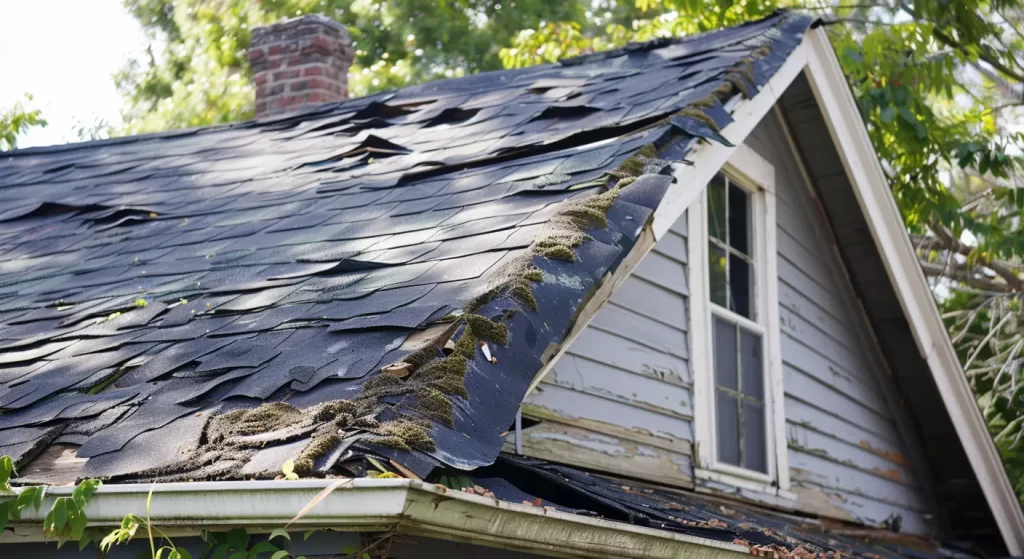
Why Trust Shield Roofing: Certifications & Experience
Choosing Shield Roofing means relying on 25+ years of expertise and industry recognition, including:
- Certifications: Owens Corning Preferred Contractor, GAF affiliation, and BBB A+ rating ensure quality assurance.
- Experience: Our team has managed diverse projects, from minor roof inspections to large-scale emergency roof repairs.
- High-quality materials: We exclusively use brands like Owens Corning and GAF for durability.
Whether it’s shingle replacements or complex roofing needs, our services are built tough and built to last. Let’s now review the process of navigating insurance claims.
Navigating the Insurance Claims Process
Filing an insurance claim for storm-related roof damage requires thorough organization and precise attention to detail. Contact your insurance company promptly to report the incident and schedule an inspection at the earliest opportunity. Providing necessary documentation, including clear photos of the damage, helps secure coverage for your roof repair. Shield Roofing can assist in streamlining this challenging process and ensuring you maximize your claim effectively. Want expert advice on working with your insurer? Read on for helpful tips and strategies.
Working With Your Insurer to Maximize Coverage
Proactive steps can enhance your insurance coverage after roof damage. Start by thoroughly documenting the storm damage with photographs and videos of missing shingles and leaks. This visual evidence is crucial for your insurance claim.
Maintain open communication with your insurance adjuster and ask questions about your policy’s coverage, especially regarding storm-related damages. Collaborating with a reputable contractor can provide professional inspections and detailed estimates that support your claim, ensuring you receive the necessary compensation for emergency roof repairs.
Smooth and Hassle-Free Claims Experience
Navigating the insurance claims process can be straightforward with the right approach. Start by documenting all visible damage with photos and videos of your roof and any interior leaks. This documentation helps your insurer understand the damage’s extent, crucial for validating your claim.
Consider a professional inspection from a reputable contractor to strengthen your case with expert assessment. Following these steps ensures a comprehensive and persuasive claim. Maintain open communication with your insurer; being proactive and responsive will foster a smooth experience. Empowering yourself with knowledge leads to better outcomes for emergency roof repairs.
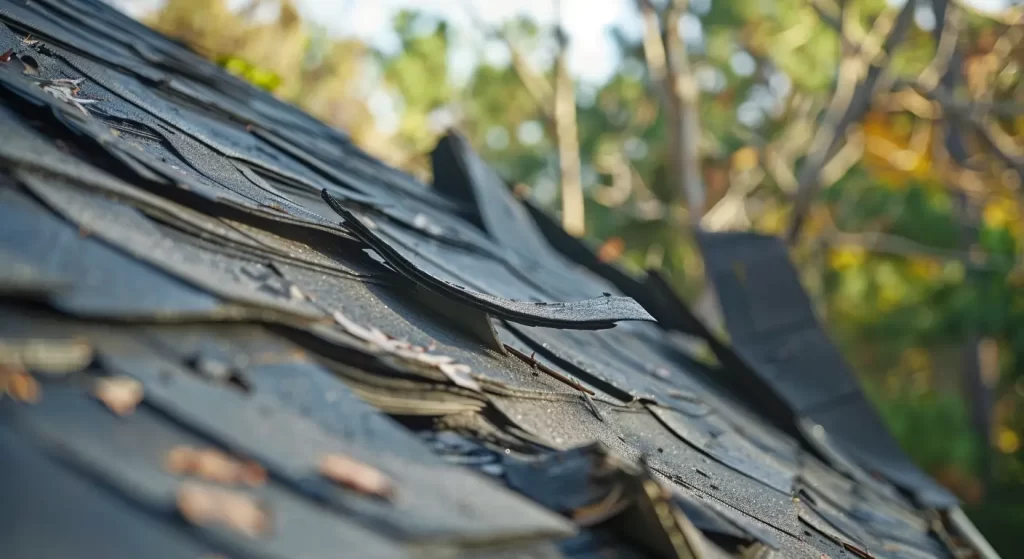
Your Next Steps
Dealing with roof damage after a storm can be overwhelming, but knowing how to respond effectively is crucial. By assessing the situation, taking immediate protective measures, and seeking professional help, you can protect your home and streamline repairs. With over 25 years of experience in roofing services, we take pride in our certifications, which include being an Owens Corning Preferred Contractor, having a GAF affiliation, and maintaining a BBB A+ rating, along with CTRCA and Directorii recognition. Contact us today for reliable service; we’re here to support you with expertise and care!
Read our blog: Pros & Cons of Built‑Up Roofing for Commercial Buildings
Frequently Asked Questions
What temporary roof fixes work before help arrives?
Temporary solutions such as a waterproof tarp, roofing cement, or strategically placed buckets can manage water leaks and minimize further damage during an emergency situation. These measures offer a quick temporary fix until professional help is available.
Does my roof need repairs or full replacement?
A professional inspection can determine if your roof has extensive damage requiring a new roof or if targeted repairs are sufficient. Signs of significant damage, such as structural compromise, usually indicate the need for full replacement.
What should you do while waiting for roof repairs?
In emergencies requiring roof repairs, quick action is essential to prevent water damage. Use tarps to cover the damaged area and relocate belongings to safeguard them. Stay safe by avoiding affected areas and checking for electrical hazards.
These temporary measures protect your home’s structure and allow time for professional repairs. Promptly addressing roof issues minimizes further damage and costs, mitigating risks and ensuring your household’s safety.
